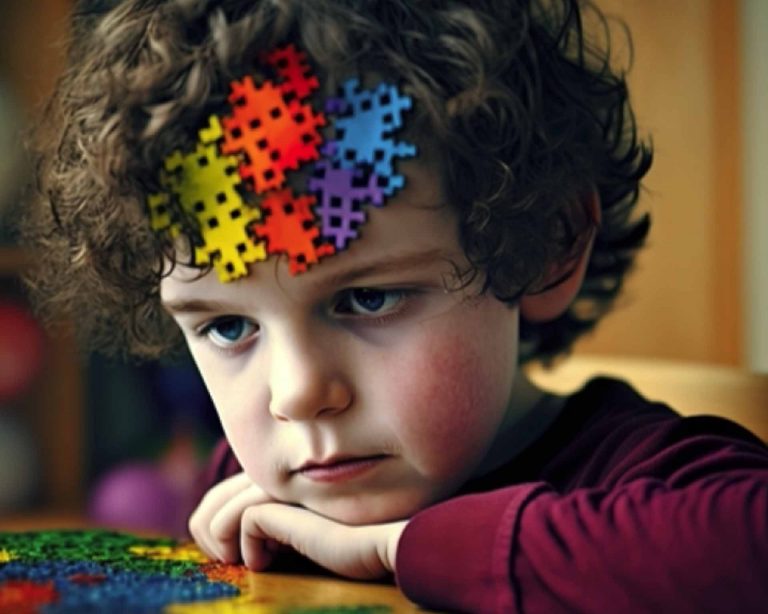When we step into a classroom, we encounter a microcosm of the world, brimming with diverse individuals each possessing unique strengths, challenges, and learning styles. This diversity includes students with Autism Spectrum Disorder (ASD).
Affecting one in every 54 children according to the CDC, autism presents a set of distinctive challenges that can make the educational journey more daunting. Let’s take a deeper dive into the labyrinth of autism education and explore strategies to empower these extraordinary learners.
The Autism-Education Nexus: Unraveling the Challenges
Children with autism experience the world differently. Sensory stimuli, social interaction, and communication – areas that we often take for granted – can prove overwhelming and challenging for them. Moreover, these challenges do not exist in isolation; they inevitably spill over into the realm of education, manifesting in unique ways.
For instance, classrooms can be a sensory minefield for a student with autism. The hum of fluorescent lights, the buzz of chatter, and the visual clutter can cause sensory overload, leading to anxiety and difficulty focusing.
Moreover, social interaction forms a substantial part of the school experience. For a child with ASD, who may struggle with social cues, this aspect can be particularly challenging. Group work, class participation, or just the everyday ebb and flow of school life can induce stress.
Navigating these challenges requires innovation, understanding, and a collective effort. So, what can be done to help students with autism thrive academically?
Enlightening the Path: Strategies for Success
- Individualized Education Program (IEP):
Every student with autism is unique and therefore needs an education tailored to their specific needs. The Individuals with Disabilities Education Act (IDEA) stipulates that public schools should provide an IEP for each child receiving special education
services. IEPs are tailored to each student’s unique needs and include specific educational goals. They are critical tools that can aid the academic success of a student with autism. - Incorporating Technology:
Technology, when used creatively, can be a valuable tool in making education more accessible for students with autism. For instance, assistive technologies like text-to- speech or speech-to-text programs can help in overcoming communication challenges. Educational apps designed for students with ASD can make learning more engaging and interactive. - CreatinganAutism-FriendlyClassroomEnvironment:
The physical environment of a classroom can significantly impact a student with autism. Classrooms can be made more autism-friendly by incorporating quiet spaces for students who may need a break from sensory stimulation. Organizing the classroom in a predictable manner can also reduce anxiety associated with unexpected changes - IncorporatingSocialSkillsTraining:
Social skills training, as a part of the school curriculum, can be incredibly beneficial for students with autism. This training could involve role-playing scenarios to understand and respond to social cues better, enhancing their ability to engage and interact with their peers more comfortably. - BuildingStrongHome-SchoolPartnerships:
Parents or caregivers of children with autism are often their first teachers. Forming a strong partnership between educators and parents can ensure consistency in strategies used at school and home, thus fostering a better learning experience for the student.
The journey through the educational maze is not the same for every student. For those with autism, the path may be riddled with unique hurdles. However, with tailored strategies and a supportive learning environment, these challenges can be transformed into opportunities for growth and learning.
Empowering students with autism to thrive in their educational journey involves understanding their world, customizing teaching strategies, and creating a supportive, inclusive learning environment. By doing so, we ensure that every child, regardless of their challenges, can navigate the maze of education successfully, reaching the end with a sense of accomplishment, growth, and readiness for the world beyond.
References:
- Centers for Disease Control and Prevention (2020). Data and Statistics on Autism Spectrum Disorder. Retrieved from: https://www.cdc.gov/ncbddd/autism/data.html
- Ashburner, J., Ziviani, J., & Rodger, S. (2008). Sensory processing and classroom emotional, behavioral, and educational outcomes in children with autism spectrum disorder. American Journal of Occupational Therapy, 62(5), 564–573.
- American Psychiatric Association. (2013). Diagnostic and statistical manual of mental disorders (DSM-5®). American Psychiatric Pub.
- U.S. Department of Education (2017). About IDEA. Retrieved from: https://sites.ed.gov/idea/about-idea/
- Grynszpan, O., Weiss, P. L., Perez-Diaz, F., & Gal, E. (2014). Innovative technology-based interventions for autism spectrum disorders: A meta-analysis. Autism, 18(4), 346-361.
- Hanley, M., Khairat, M., Taylor, K., Wilson, R., Cole-Fletcher, R., & Riby, D. M. (2017). Classroom displays—attraction or distraction? Evidence of impact on attention and learning from children with and without autism. Developmental Psychology, 53(7), 1265.
- Reichow, B., & Volkmar, F. R. (2010). Social skills interventions for individuals with autism: Evaluation for evidence-based practices within a best evidence synthesis framework. Journal of autism and developmental disorders, 40(2), 149-166.
- Murray, M., Ackerman-Spain, K., Williams, E. U., & Ryley, A. T. (2011). Knowledge is power: Empowering the autism community through parent-professional training. The School Community Journal, 21(1), 19.








